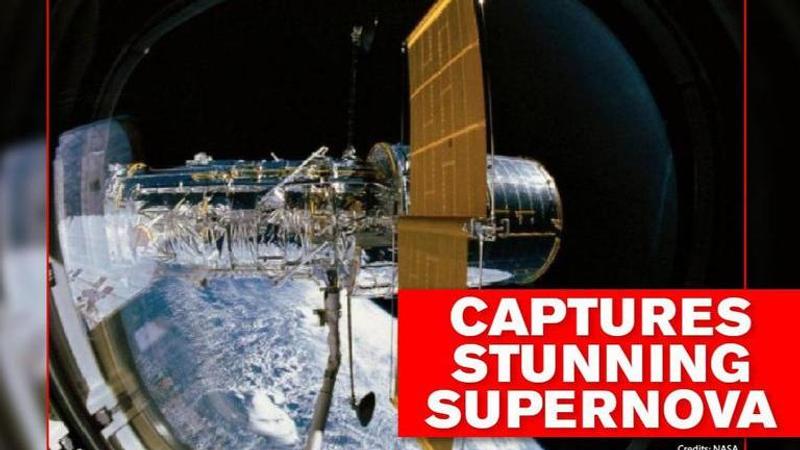Published 13:00 IST, August 30th 2020
NASA's Hubble Telescope captures spectacular 'veil-like' supernova blast
The original supernova explosion larger than the sun occurred some 10,000 and 20,000 years ago according to NASA, as remnants of the dead stars expanded.

NASA and European Space Agency (ESA) Hubble Space Telescope captured a spectacular view of the ‘veil-like’ stellar blast occurring at around 2,400 light-years away. On August 28, NASA took to its official Twitter handle to share the image of a section of Cygnus supernova blast wave in the space that spurted across area 36 times larger than the full Moon. In a press release, NASA said that the supernova remnant originated from the northern constellation of Cygnus, popularly known as ‘the Swan’.
While the original supernova explosion larger than the sun occurred some 10,000 and 20,000 years ago according to NASA, the remnants of the dead stars expanded 60 light-years from its center years later at 220 miles per second. Scientists observed the shockwaves emanating out of the dead stars that marked the outer edge of the supernova. NASA explains in the release that the interstellar material interacted with the burst material that spiralled outwardly which led to the formation of a veil-like stellar structure due to powerful explosion.
[Dead stars collapse and explode as a supernova. Credit: NASA]
[Galaxy NGC 5861, captured here by the NASA/ESA Hubble Space Telescope 85 million light-years away. Credit: NASA]
“A hardy star in a stellar explosion’s debris field − is called its supernova remnant,” NASA explained in a separate release.
Earlier Hubble also detected two supernovae, SN 1971D and SN 2017erp in the galaxy in May 2020 formed due to luminous explosions. According to NASA scientists, the phenomenon was “brighter than any other star in the night sky.” However, scientists said that the “brightest supernova ever recorded.” Supernova in the galaxy is SN 1006, which exploded in Milky Way galaxy and shone “16 times as bright as Venus from April 30 to May 1, 1006 AD.”
Netizens mesmerized
Internet commenced active discussions in the comments thread, speculating that the star explosion caused a black hole, while others assuming the time Supernova 2400 light-years away would take to reach the Earth. “Supernova remnant is 2400 light-years away, so it will take at least that amount of time (2400 years from now). That is if it comes out the way at all,” a user wrote. “Don't these Shock waves play an important role in the star gas star cycle,” asked another. “How cool! It looks like something an artist would make but it's a real picture,” said one other.
Updated 13:00 IST, August 30th 2020





